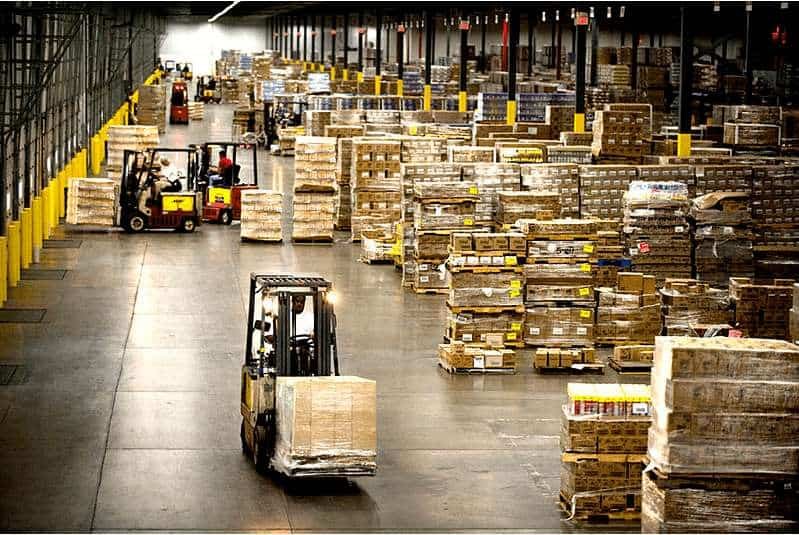Bulk material handling equipment encompasses a variety of tools, storage units, vehicles, and appliances.
It also includes accessories involved in enumerating, transporting, protecting, controlling, and storing products right from the manufacturing stage to the distribution and disposal stage.

Such equipment comes in handy when you need to move large and heavy materials in a production process. The 4 categories of industrial handling machines include bulk material handling equipment, engineered systems, industrial trucks, and storage handling equipment.
It is also equally important to learn and understand how each of these tools operates. This article will help you find all the answers you need.
Storage handling equipment
These storage tools are usually non-automated equipment meant for buffering or holding heavy materials before they are transported. They also help in long-term storage intended to give the company more time to build up stock.
The various types of storage equipment include racks, pallets, or shelves where materials are arranged in an orderly manner as they await consumption or transportation.
Aside from enhancing storage efficiency, storage handling equipment aids in space conservation while materials are in inventory. Other examples of storage handling equipment include the following:
Mezzanines-They includes movable, modular, building supported, rack supported, and free-standing storage systems designed to create more storage space in a warehouse or a storage building.
Pallet inverters- they resemble up ender inverters and help to reposition or rotate fully loaded pallets with ease.
Work assists tooling-enhance the efficiency of product movement and assembly in the safest way possible, across several industrial applications.
stacking frames- These tools come in form of blocks that allows storage of liquid containers among other crushable pallets of inventory.
Heavy material systems
These devices are designed purposely for transportation, storage, and control of bulky products. For instance, the handling of metal items, beverages, minerals, liquids among others. Typically, these types of machinery are used to move loose items.
For example, the convey belt is used to transport products from one part of the production process to another horizontally. Hoopers and drums may be used to funnel loose items to a place where they can be packaged or manipulated. Elevators on the other hand are primarily used for vertical transportation.
Other bulk material handling equipment includes bucket elevators, grain elevators, silos, elevated lift tables, stackers, and reclaimers. See this link to read more!
Industrial material handling trucks
The industrial material handling truck is a broad term that stands for multiple types of transportation equipment. They include hand-operated devices, small, and large-scale motorized vehicles.
Most of these appliances can be driven while others like the pallet trucks enhance the mobility of products that are being handled. Additionally, these tools feature a flat surface or a fork that is inserted under a pallet for easier lifting.
Not all trucks are automated, some can be pushed manually. Others have smart sensors that when an obstacle or employee is nearby.
Here is a list of some of the most commonly used industrial tucks
Several types of AGV-these trucks are automated and do not require any human assistance.
Hand trucks-features a small platform to lay the heavy object on and a wide handle for leverage. The product being moved must be carried in a tilted position to its destination.
Platform trucks-these hand trucks have a wide platform for carrying bulky goods. They are also very low to the ground.
Order pickers-they aid in storing goods on higher shelves by lifting the operator numerous feet above the ground
Pallet trucks-these trucks are designed specifically for moving pallets. You will find both electrical and manual versions.
Side loader-commonly known as very narrow aisle (VNA) trucks are designed to load items in narrow spaces in different directions.

Engineered systems
Engineered systems are generally automated. They involve a variety of units that are combined to form a single system. They are mainly used for both transportation and storage.
An Automated Storage and Retrieval System (AS/RS) for instance is a huge, engineered device featuring multiple aisles, racks, and shelves. Its main purpose is to provide an efficient storage solution.
AS/RS are operated with the help of a shuttle, a mechanized device that helps to select items manually as needed. The device can also be integrated with the company’s computer or other logistics system to enhance stock control.
Plus, it can also be integrated with other stages of production like the distribution, and consumption stage, to achieve as much automation as possible. Click here to read more about material handling.
Conclusion
Investing in the right material handling machinery can help you grow your business and make your work easier. Now that you’re familiar with these tools, the next step is to identify a reputable supplier. The right supplier should provide you with a solution that will suit your unique needs. Space is also an important aspect of the production environment. Before you opt for particular tools or appliances make sure you have enough room to accommodate them as well.

